The canones.org website is part of the five-year project ‘The Social Life of Early Medieval Normative Texts’ (SOLEMNE), funded through an ERC Consolidator Grant awarded to Dr Sven Meeder.
Early medieval Western Europe has left us a rich and varied corpus of medieval primary sources, with thousands of extant manuscripts containing works of biblical exegesis, historiography, poetry, educational texts and (late-)antique literature. These texts allow us a glimpse of the dynamic processes of European identity formation, the formation of cultural memory, religious conversion, cultural exchange, and the literary uses of the past. Canon law stands at the core of many of these social developments as medieval people tried to make sense of and structure a post-Roman, ‘European’ society.
The period saw intense attention devoted to the organisation of church councils and considerable learned effort and vast economic funds were spent on copying and distributing late-antique and more recent collections of canon law. The results are found in hundreds of extant manuscripts containing great canonical collections with (modern) names like the Collectio Dionysiana, the Collectio Dacheriana, the Collectio Quesnelliana, the Collectio Quadripartitus, the Collectio Vetus Gallica,and the Irish Collectio canonum Hibernensis, to name a few. In the shadow of these widely-disseminated ‘grand’ canonical collections, many smaller compendia and canonical florilegia were thought out, compiled, copied, and spread to cater for specific purposes in particular (local) contexts. Alongside purely ecclesiastical concerns, canonical compilations reflect thoughts and ideas on social practices central to medieval society, such as dispute settlement, murder and theft, sexual conduct and gender relations, social hierarchies, and notions of property rights. Canonical works are thus able to reflect upon social history as much as intellectual history.
The project ‘The Social Life of Early Medieval Normative Texts’ (SOLEMNE) studies the canonical collections (big and small) as sources for medieval society. It subscribes to the statement that canon law is a genre that intersects ‘with every aspect of medieval life and society’*Rennie, Kriston R., Medieval canon law (Past imperfect, Leeds, UK, 2018) and recognises that the dynamic process of selecting and organising authoritative statements into certain combinations reflects the medieval compilers’ ambition to formulate their thoughts on social norms for a specific audience and a particular context. Canonical ideas were sometimes articulated in rephrased or strategically cropped authoritative statements, but more often the creative process was expressed in the selection and deliberate combination of canones. In an effort to make sense of society—with the aid of revered authorities—medieval literati engaged in the compilation of canonical material in new arrangements, with the authoritative statements functioning as the composite elements in new textual contexts. Thoughts on social life and norms were not so much expressed in individual decrees (or ‘canons’), but rather in smaller or larger clusters of decrees formed by judiciously made combinations of decrees in a particular arrangement. SOLEMNE studies the spread and reception of these canonical combinations throughout the vast corpus of collection of canon law, as a window into medieval thoughts on social norms.
The general aim of SOLEMNE is to chart and contextualise the spread of social norms as articulated in specific combinations of canons in a bottom-up approach starting from the vast corpus of manuscript witnesses of canonical compendia in every shape and form. It follows from the conviction that social and cultural norms are expressed not only in the moment that the canons are formulated but also by a continuous recontextualization in canonical collections, dossiers and florilegia. SOLEMNE consists of four subprojects, conducted by the various members of the project team, as well as the development of a sophisticated database of canonical material from Western Europe c. 300-1140.
Dynamic dataset
At the core of the SOLEMNE project is a dataset that holds information about canonical collections, their constituent elements, and their manuscript context. This information can be brought to bear on the fundamental questions: How was the collection spread, and in the company of which satellite texts? When was the collection created? Where, and by whom? Subsequently, the dataset records the ideal ‘types’ of both canons (or, to use a less loaded term, authoritative statements) and collections. This will require the identification of individual canons according to their pedigree, either conciliar, decretal, penitential, or patristic, and depend on the (theoretical) reconstruction of texts in critical editions. The individual typical authoritative statements can be assigned unique identifiers.
The dataset enables researchers to chart the spread of authoritative statements in medieval canonical collections. The heart of the innovative digital tool, however, is a dynamic comparative function, which is able to reveal connections between canonical collections based on shared combinations of canonical decrees. Through a web-based application designed to identify links between canonical collections on the basis of shared combinations, SOLEMNE allows scholars to monitor the spread and development of ideas and notions expressed in canonical works. The SOLEMNE dataset allows for (and is interested in) development and modifications within the normative tradition: shared content might be able to tell us where a compiler has found his material, but it is in the rearrangement, selection, and omission that we see the compiler’s negotiation with the material—and his direct exemplars—to formulate social norms to suit his context.
The search interface allows for queries of shared content in canonical collections or manuscripts and of levels of affinity based on combinations of authoritative statements. In the latter case, it is not unlike the comparison of DNA sequencing techniques, which privilege the order and combinations of nucleotides over their mere presence. The online application is able to identify the sharing of sets of two or more canones that may indicate intellectual, cultural and/or social relationships. The results can be visualised in a dynamic comparative table or as an interactive network of nodes and ties.
- *Rennie, Kriston R., Medieval canon law (Past imperfect, Leeds, UK, 2018)

